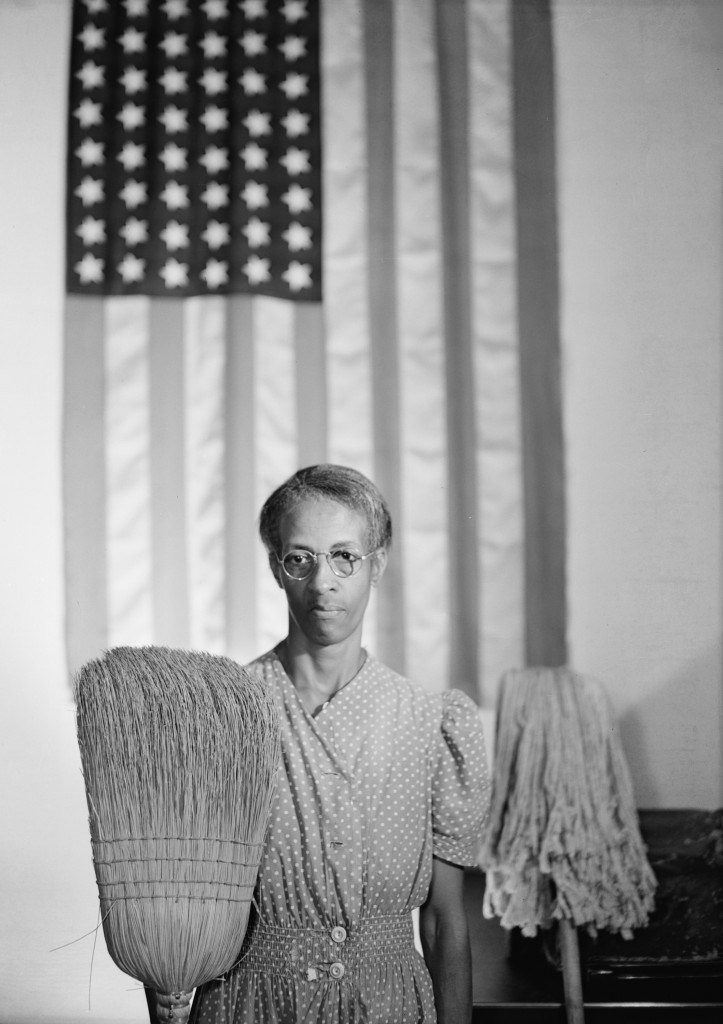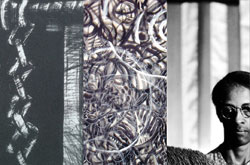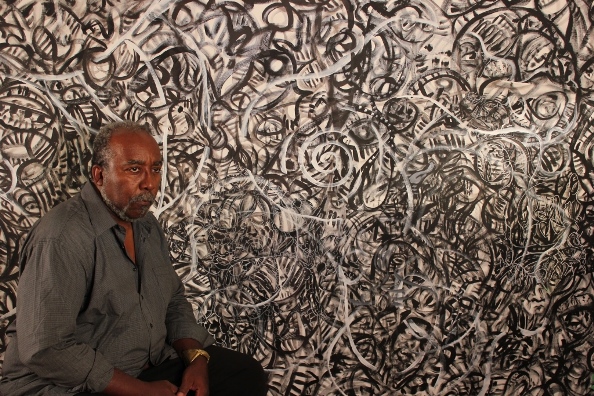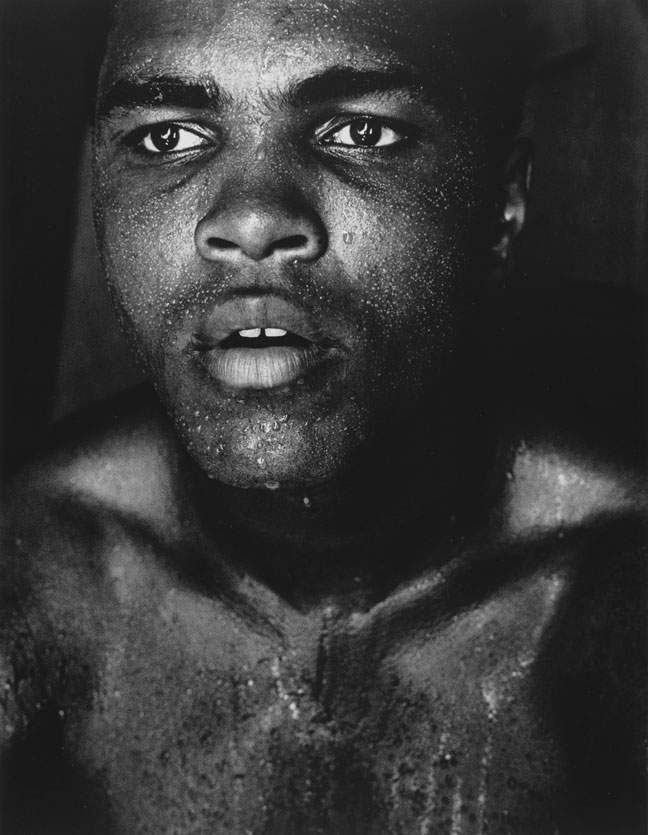
Race, history and community in “Black and White,” with work by Ta-Coumba Aiken, Joseph Norman and Gordon Parks
There’s a small but noteworthy exhibition on view now in Metropolitan State University’s Gordon Parks Gallery. “Black and White” includes work by three artists – the gallery’s namesake, Gordon Parks, St. Paul-based artist and community activist; Ta-Coumba Aiken; and acclaimed printmaker Joseph Norman. (Incidentally, the latter two are teaming up for a companion show at Minneapolis College of Art and Design, which will open with a special live-drawing event and artist talk next Friday, February 8.)
As the title suggests, the show features photographs, lithographs and painting rendered in black and white, but the selection of pieces play on the metaphors and historical allusions suggested by that palette as well: race relations, in particular, is a prominent theme.
“Black and White” runs through March 1 at the Gordon Parks Gallery in Metro State University’s St. Paul campus.
As you walk into the small gallery space, the wall to your left is dominated by a large panel from Aiken’s monumental new 30-foot installation, “The Calling.” Ink-black and gossamer white lines swirl in, over and around each other on the unframed canvas. Aiken’s gestures are frenetic and exuberant, layered one atop the other. But there’s a narrative flow to the tangle of imagery: look long enough, and vignettes begin to resolve into view – a mother brushes her lips across a little child’s forehead; a trio of forms, arms upraised, lift their feet in dance; here an open mouth calls out to others, from across the stretch of canvas. There’s a sense of gathering – of community and vitality and shared history – in the calligraphic curves and stylized faces crowding Aiken’s work.
On the right wall of the gallery, facing Aiken’s mural, are lithographs by Joseph Norman: “Out at Home! The Negro Baseball League” offers a stark rumination on subjugation and systemic racism, particularly focusing on the injustices faced by African-American players in the early to mid-twentieth century until Jackie Robinson broke the sport’s color barrier. There’s no mistaking the vicious history he’s portraying with this series of images: balls and bats stand in for the athletes, and are shown on trial and shackled in chains, studded with nails, bound with rope and hung from trees. The palette is dark-on-dark, the images bleak and plainly articulated. A statement on one of the prints describes his aim to depict the intersection of “struggle, enslavement, and sport… and how racism has sullied the game.” The imagery is visceral, unsubtle, righteous – and all the more striking set in conversation with Aiken’s piece across the way.
Ta-Coumba Aiken and “The Calling” (detail), 2012, acrylic on canvas. Photo: William Franklin (Courtesy of the artist)
Against the back wall are a handful of black and white portraits and landscapes by photographer Gordon Parks. A standout among them: “American Gothic, Washington D.C.,” taken in 1942 – a then-provocative shot wryly named for the famous Grant Wood painting. Ella Watson is his subject, an older African American cleaning woman employed by the Farm Security Administration at the same time as Parks served as an FSA photographer. She’s depicted against the grand backdrop of an American flag, her back straight and gaze averted but not downcast, with a mop in one hand and a broom in the other. Another Parks photo immediately catches the eye: his arresting 1970 portrait of Muhammed Ali, captured just after a fight. The boxer is dappled with the sweat from his exertions, clear-eyed and powerful, but also somehow vulnerable in that unguarded moment. The image is accompanied by one of Parks’ poems, fitting for the exhibition as a whole: “I speak of a hero/ with/ Anger in his heart/ with/ Fury in his fist/ And terror in his sleep….”
Gordon Parks, “Muhammad Ali,” 1970, silver gelatin print. Courtesy of Gordon Parks Gallery.
“Black and White,” featuring the artwork of Ta-Coumba Aiken, Joseph Norman and Gordon Parks, will be on view at the Gordon Parks Gallery in Metropolitan State University from January 24 through March 1, in the Library and Learning Center on the St. Paul campus at 645 East Seventh Street. There is a reception and artist talk with Aiken and Norman scheduled for Thursday, February 7, from 4:30 to 7 p.m. For more information, visit www.metrostate.edu/msweb/explore/cas/departments/cwa/gallery/. The companion exhibition at Minneapolis College of Art and Design opens with a reception and artists’ presentation on Friday, February 8.
Recent Content
-
Artsarticle ·
-
Artsarticle ·
-
Artsarticle ·



